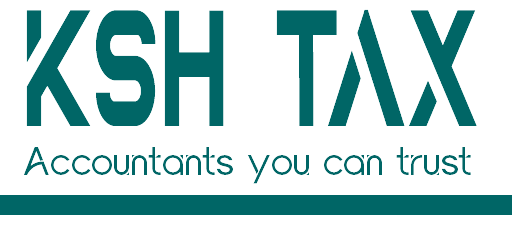One of the most crucial financial decisions you can make throughout your lifetime is knowing how to manage your superannuation. In Australia, superannuation is a vital part of retirement planning, helping ensure that one has enough funds once one stops working. But you should review your super fund after retirement and change it for a better plan that suits your financial goal. Well, let’s find out more from our blog post below as follows; Why you might want to change your super fund after retirement One may want to change their superannuation fund after retirement for a variety of reasons, such as; Better fees and investment options Not all super funds individuals opt for have friendly charges; some have high fees that eventually consume people’s savings. This gives most people reasons enough to switch to a fund offering more reasonable investment charges. More control over investments Nothing beats the joy of taking control of your super investments as a retiree. It helps you live a deserving retirement lifestyle that everyone desires. If you want to experience this kind of freedom, choose a super fund with a self-management (SMSF)option. Improved customer service People prefer using companies that offer better customer experience, knowing that their needs will be taken care of. This will assure retirees that they will get great advisers to help them manage their retirement income well. Consolidate super funds Having many super funds throughout one’s working life will make one want to consolidate all of them into one fund. This is because managing one fund is more straightforward than having a couple and helps simplify a retiree’s financial life. Step-by-step guide on how to change your super fund after retirement Are you looking to change your super fund? If so, then here’s a quick step-by-step guide on how you can do it; Review your current super fund. First, before you decide to change your super fund, you must review your current fund to assess the fees and investment options, among other features. If you are not sure what to do, contact your financial adviser to help evaluate whether the fund is still the best option or you should change. Consider your options Consider your options by conducting research that will help you figure out which fund is best for you. This could include information on fees, charges, returns, or even investment options and finding one that suits your needs. Contact your new super fund. Once you’ve decided on a good super fund, contact them and get to learn about their transferring process. Take note of each step to avoid making mistakes. When transferring funds, make sure to; Confirm if there are any exit fees or transfer fees with your current super fund. Check for any waiting periods before you can access your super funds from the new fund. Ensure the new fund accepts your existing balance, especially if you have a large super balance. Transfer your super balance. Once you’ve mastered all the process and done the paperwork accompanied by changing funds, let the new super fund handle the transfer of your balance from the old fund. Ensure that all outstanding payments and charges, if you have any, have been sorted out before allowing the transfer to take place. Update your withdrawal details. Update your new superfund about withdrawals made through a pension or lump sum for your super. Let them know how you’d prefer to receive income, i.e., whether quarterly or monthly. Monitor your new super fund. It is always important to monitor and track your new super fund to see how your investments are performing. Review each statement regularly to stay informed about how the funds are being managed and whether they are aligned with your goal. What to keep in mind when changing your super fund after retirement Having to change your super fund is a big deal, and before you do that, there are several things you should keep in mind; Exit fees Before you exit, you need to understand that there might be charges. Some super funds charge individuals an exit fee. Tax implications Be aware of potential tax implications and consequences brought about by switching funds. Impact on your retirement income Always check to confirm that the new fund you want to move to can provide you with the income you need to support your retirement. Consider a super fund that can provide a regular income stream, such as a pension. Insurance If insurance coverage is provided through your previous super fund, such as income protection or total permanent disability, ensure that the new super fund offers similar or better coverage. Wrapping up Changing your super fund is a strategic move that can financially change one’s retirement life. Whether you are looking for a low fee, more control over your investment or better services, there will always be a super fund suitable for you. Seek professional advice from a registered tax advisor to help you.
Tax Scam and How to Spot and Deal With Them in Australia
Tax scams have become a part of our daily lives. They are prevalent during tax time, targeting specific individuals who are expected to handle their tax returns and refunds by themselves. Fraudsters have constantly devised new strategies to outsmart the system, tricking many Australians into sharing their personal information and hard-earned money. Understanding tax scams in Australia Tax scams are fraudulent activities that involve stealing money or personal information from taxpayers. They may impersonate legitimate authorities such as the Australian Taxation Office to gain trust and manipulate taxpayers into acting impulsively. Common tax scams Australians should be aware of Many scams are being reported in Australia, and here are some of them; 1. ATO impersonation scams Have you ever received calls, texts, or emails threatening you with your tax penalties or demanding immediate payment for non-existent debts? If so, chances are that you were a victim. Scammers often use the pressure tactic with threats to make individuals act in alignment with their demands. 2. Fake tax refund scams Scammers may email individuals claiming that they are entitled to a tax refund. They may request individual account details for refund processing, leading to fraudulent activities. 3. Tax debt scams This type of scam involves fraudsters sending individuals emails or calls, claiming they owe them a large sum of money and demanding immediate payment. They may threaten them and eventually send money to them out of desperation. 4. Phishing and smishing scams Phishing emails or smishing text messages have become a common form of scam lately. Scammers send fake messages impersonating ATO with clickable links that could compromise sensitive data. How to spot a tax scam in Australia 1. Unsolicited contact Individuals should note that ATO does not call, email, or text them without warning. Receiving unexpected communication claiming to be them should be marked as a scam and reported. 2. Urgent requests for payment Scammers always tend to impose a sense of urgency on their culprits, claiming they must make the payment or act immediately to avoid legal consequences. 3. Threats of arrest or jail It’s common for scammers to threaten individuals with legal action if they fail to pay up, but the ATO does not operate in that manner. 4. Suspicious links or attachments If you notice that you are being sent emails or messages containing clickable links or attachments, you should always be cautious, as most lead to websites that steal your data. 5. Generic or unprofessional communication Mostly, phishing emails may contain vague and impersonal information as opposed to the ones sent by ATO, which are transparent to the point and professional. How to protect yourself from tax scams Being able to spot and know how you can protect yourself from a scammer is a smart move. Here are some of the tips which can guide you and help you avoid falling victim to fraudsters’ tricks; 1. Verify any suspicious contact. If you receive unsolicited emails, phone calls, or text messages claiming to be from ATO or myGov, don’t rush to respond immediately. Instead, contact the ATO for direct information and confirm if the communication was legitimate. 2. Don’t give out personal information. Never share your personal information or financial details in response to unsolicited communication. Tax file numbers, bank account details, and passwords should always be kept private unless otherwise stated. 3. Use strong passwords Always choose complicated passwords that can not be easily hacked. Ensure that you have set the two-factor authentication method. 4. Check your myGov account regularly. Ensure your myGov account is active and secure by regularly monitoring your tax records and notifications. You can also start a new routine, such as typing the URL directly instead of copying and pasting it from elsewhere to access your account. 5. Keep software updated Ensure your machine has the latest software, security, and antivirus updates. This will help protect you from phishing websites and malicious downloads. Winding up Tax scams are and will always continue to happen. They shouldn’t be taken lightly, as they are a matter of concern. Individuals should always learn to stay vigilant to protect themselves from becoming victims. Always seek guidance from the ATO or myGov once you receive unsolicited communications before responding or sharing your data with them.
How to Manage Taxes as a Sole Trader in Australia
Sole traders in Australia always have tight deadlines and schedules that they must adhere to, and managing their taxes can sometimes be overwhelming. Knowing how to maneuver around these taxes is very important. It helps keep your business compliant and enables you to maximize your financial success. In this guide, we cover everything you need to know to manage your taxes efficiently. How can you manage taxes as a sole trader in Australia? 1. Understanding tax obligations for sole traders As a sole trader, you have various tax obligations that you are required to take care of, and with us are some of them as follows; Income tax Usually, as a sole trader, your business income is taxed as part of your individual tax returns. The ATO progressive tax rates provided determine the tax you will be charged. This means the higher the amount of money, the higher the tax rate. Goods and services tax (GST) If your business has a turnover of $75,000 or more, you must register for GST. This will allow you to charge GST on your sales and may allow you to claim GST credits on your purchases. Pay As You Go (PAYG) withholding. Hiring employees means you must withhold tax from their wages and remit it to the ATO. However, you shouldn’t have to worry about the PAYG withholding if you haven’t employed any staff. Superannuation As a sole trader, you are required to contribute to your own superannuation, which is considered a personal responsibility unless you are hiring employees. 2. Track your income and expenses. Keep track of all your records, as it is essential to manage your taxes. All income and expense records connected to your business should always be kept. 3. Claim deductions to reduce taxable income One advantage of being a sole trader is reducing taxable income by claiming legitimate business expenses as tax deductions. This method can help you save yourself some money. Some of the deductions you can claim include the following; Business expenses Costs related to your business, such as office supplies, rent, utilities, and marketing, are considered deductibles. Vehicle and travel expenses If you use your car for business purposes, you can claim deductions for certain expenses, such as fuel, maintenance, insurance, and depreciation. The deductions to be claimed depend on the percentage of business use. Home office expenses If you run your business from home, you can claim deductions for a portion of your home’s rent, mortgage interest, electricity, internet, and other associated costs based on the size of your office. Depreciation of assets Over time, you can claim depreciation on assets like computers, office furniture, and machinery. 4. Use accounting software Consider using accounting software such as MYOB and XERO to help you keep your financial records organized and safe. The software allows you to track income expenses, generate financial reports, and even prepare BAS lodgments. 5. Lodge your tax return. As a sole trader, you are supposed to submit your tax returns towards the end of the financial year, which is usually due by 31 October each year. You must ensure that you have reported all income from your business and deduct any eligible business expenses to calculate your taxable income. If registered for GST, lodge a BAS quarterly or annually, depending on your turnover. 6. Make payments to the ATO. Once your tax return lodgment is done, pay off any existing tax liabilities you may have. If you are required to make PAYG installment payments, you’ll need to pay quarterly. For GST-registered businesses, you must pay the GST you’ve collected on your sales minus any GST credits you’ve claimed on your purchases. 7. Consult a tax professional. If you are having trouble managing your taxes or need guidance, consult with a tax professional. This is because they can help you understand your tax obligations, ensure you’re claiming all the deductions you’re entitled to, and assist with any complex tax matters. 8. Stay updated on tax changes. Tax laws and regulations can change, so staying updated on any new tax rules that may affect your business is essential. The ATO often releases updates, and it’s beneficial to stay informed on new tax rates, deductions, or requirements that could impact your business. Conclusion Managing taxes should no longer be a headache as a sole trader. You must understand your obligations and develop strategies for handling them together. If you are not sure how you will manage these tax obligations, don’t hesitate to reach out to a tax professional to help you stay updated with the latest tax rates and more.
What is an Account Based Pension?
An account-based pension (ABP) is a popular retirement income solution in Australia. Its purpose is to offer individuals access to their superannuation savings. It gives people the flexibility to access their superannuation at the same time allowing them to remain in control of their funds. Understanding what it entails is useful as you near retirement age, as it will help you get the most out of your superannuation. What Is an Account-Based Pension? An account-based pension is a retirement income that converts superannuation savings into regular income after reaching preservation age. It allows individuals to withdraw a portion of their super balance while the remaining funds remain invested and continue to grow. How does an account-based pension work? An account-based pension allows individuals to use their accumulated superannuation balance to provide them with regular income payments. Here’s how it works: 1. Converting super to a pension This occurs when someone retires and chooses an account-based pension, transferring their entire superannuation balance into a dedicated pension account. The balance is then invested, allowing them to receive a pension income from it. 2. Income withdrawals It gives individuals the freedom to choose how much they want to withdraw within the government’s limit. Typically, these payments are made monthly, quarterly, or annually. 3. Investment control Generally, with an account-based pension, people can choose how their funds are invested. They can choose whether they want them in low-risk options, such as cash, or more aggressive options, like shares or properties. 4. Tax advantages You may have an advantage on the income you receive from an account-based pension if you are 60 years or older. However, these advantages are not for those under 60; hence, they will be subject to tax, but they may receive a tax offset. Advantages of an account-based pension Setting up an account-based pension has a lot to offer individuals looking to retire, and with us are some of these advantages as follows; 1. Flexibility One of the most interesting offers an ABP can offer an individual is the freedom to withdraw any amount at any time. One can adjust withdrawals to fit their lifestyle and financial needs. 2. Tax-free Income (for those over 60) Individuals 60 years of age and older can withdraw income from their accounts for free without being charged any taxes. This makes it an excellent tax-efficient retirement income option. 3. Control over investments An account-based pension gives individuals full control to choose their investments, which can potentially allow room for capital growth and better returns if their portfolio performs well. 4. Capital growth An ABP gives individuals’ accounts room for capital growth since their funds remain invested, which can increase their balance as time goes by. This will provide a long-lasting retirement income stream. 5. Estate planning benefits Are you worried about what will happen if you pass on and you have money in your account-based pension? The good news is that the funds are left to your beneficiaries, potentially without them having to pay taxes. Account-based pension vs other pension options There are many other options that individuals could use to access their super in retirement, and an account-based pension is one of them. Other alternatives include; Annuities It is a fixed income stream that provides individuals with a guaranteed payment for a set period of life, offering less flexibility but more stability. Defined benefit pensions It’s a pension based on a set formula, usually tied to an individual’s final salary and year of service, that provides predictable payments. Note: unlike the provided options, an account-based pension has much more to offer individuals, from flexible withdrawals and investment choices to complete control of account withdrawals that members can decide on. Conclusion An account-based pension has lots to offer individuals looking to retire and gain control of their investments. It is flexible and tax-efficient, enabling individuals to turn their superannuation savings into an income stream during their retirement period. It allows individuals to control how much they can withdraw and invest, giving retirees the potential for capital growth. If you are looking to open an account-based pension and have many questions, do not hesitate to call a financial advisor to help you make the best decision for your retirement income strategy.
How to Avoid Paying Taxes on Inherited Property in Australia
Property inheritance in Australia is such a rewarding experience for individuals; however, it’s always accompanied by its tax implications. Many can look for ways to avoid or reduce these taxes instead. How to avoid paying taxes on inherited property in Australia If you live in Australia, then you must have known or encountered the rule that you are not required to pay inheritance tax on inherited assets. However, there are a few taxes and considerations that could apply in that case, i.e., the capital gains tax (CGT) and stamp duty. 1. Capital Gains Tax (CGT) on inherited property If you plan to sell an inherited property, a capital gain tax will be imposed. Inherited property that was the deceased’s primary residence may be exempt from Capital Gains Tax (CGT) if sold within two years of the death. Still, CGT may apply to any capital gain if it’s sold after two years or if it wasn’t the deceased’s main residence. 2. Take advantage of the CGT main residence exemption. The exemption that comes with inheriting property from a deceased person states you may claim an exemption from CGT while selling the property. The exemption only applies if the inherited property was never used for investment purposes and you lived in it as your primary residence after inheriting it. However, the case would be different, and you would be required to pay tax if the inherited property was used for business or rented out. 3. Consider a family trust for future inheritance planning. A family trust can offer flexibility in distributing income generated by inherited property among beneficiaries, which may result in tax advantages depending on the beneficiaries’ tax situations. However, this is not guaranteed, and careful planning and professional advice are required. 4. Gifts, donations and bequests Consider giving gifts, donations, and bequests to reduce inherited property taxes. The reason behind this is that the tax implications accompanied by gifts and bequests made to charities can help reduce one’s overall tax burden. Making donations to registered charities may significantly reduce the overall value of your estate, lowering the beneficiaries’ CGT liability. 5. Review state-specific stamp duty rules. Stamp duty tax is one thing that most people should consider if they are inheriting properties. This is because stamp duty is heavily involved in matters dealing with the transfer of property ownership; hence, it is typically involved when a property is bought or transferred. Most of the time, people need to check whether they are liable for stamp duty exemptions and whether concessions are available when inheriting a family property. 6. Defer CGT by holding the property in a trust. If you are a trustee of an estate, one thing you need to be sure of is your ability to defer CGT until the inherited property is sold or distributed. Holding the inherited property in a trust will save you from costs related to direct sales or transfers of assets, thus deferring tax obligations. However, this strategy is typically recommended for those who inherit larger estates and want to minimize CGT in the long term. 7. Speak to a tax advisor or estate planner. When dealing with inherited properties, getting advice from a registered tax advisor or accountant should also be a top priority. This is because, through professionals, you can easily be guided through the complex landscapes of CGT, stamp duty and estate planning at once. You can also get different advantages from proper knowledge of all available exemptions and strategies. Conclusion Beneficiaries should make the smart move of devising strategies to help them minimize taxes accompanied by inherited property in Australia. You can reduce some of these tax burdens by taking advantage of things like the CGT main residence exemption, family trusts, and tax deductions. If you need tax advice, contact us for support.
Tax Returns and Deduction Checklists for Tradies
Every day in the life of a tradie is viewed as a busy day as work never ends; finding time to do your tax returns can be pretty tiring and stressful. However, you can get the right advice from ATO-authorized tax accountants on things to do with your tax deductions, claims, entitlements, and more. By filing your tax returns, you can ensure that your accounts are well-prepared and updated to comply with the Australian Taxation Office. Our blog post will guide you on the common tax deductions for tradies with examples of expenses you can claim and more. Let’s get right into it; What expenses can a tradie claim in ITR (Income Tax Return)? With ATO, as long as you are a tradie and fully aware of the expenses you need to claim for your business, they will fully allow that to take place. The government allows tradies to claim many business-related expenses, and being in the know can help reduce your taxable income. You must claim these expenses because you will be saving yourself some coins that can be useful to you for later or future use. Examples of what you can claim are as follows; 1. Tools and equipments What happens when you purchase equipment for your trade? According to ATO, you can claim a deduction for the costs you purchased them for. It doesn’t matter how basic or expensive the tool is. You can claim it on your tax if you purchased it for work. 2. Vehicle expenses Vehicles used for work can also be claimed for. Some running costs, such as fuel, maintenance, and registration, are meant to be claimed. Deduction claims can also be made if you use the car to travel from one job site to another. 3. Work clothes and protective gear If you need to wear protective gear such as work boots, hard hats, and other items to protect yourself while working, you should know that these, too, are deductibles. However, casual clothes worn outside work can be claimed as a deduction. 4. Home office Working from home, whether you are a bookkeeper, admin, or other related office professional, it’s your right to claim a deduction on expenses. The percentage you can ask for includes electricity, internet, and rent or mortgage costs. 5. Insurance premiums Businesses covered under insurance, such as vehicle and public liability insurance, should also claim for their premium deductions. For example, if you pay for insurance on your tools or business vehicle, you can claim the cost of the premiums. FAQs (Frequently Asked Questions) What can I claim on my tax return as an electrician? As an electrician, you must know the unique expenses observed when filing your tax returns. Here are some of the expenses you can claim as follows; Specialized tools You can claim on your tax return specialized tools needed by electricians for work, such as cable testers and wire cutters, among other insulated tools. Work-related travels As an electrician, you must roam from one job point to another. This means an extra charge to reach your place of work. You can freely claim for fuel, maintenance, and insurance for your vehicle. Safety equipment Being an electrician means you will forever need safety gear to protect you at work. Insulated gloves, boots, and eyewear, among other essentials, can be claimed and are considered deductibles. Training and certification As an electrician, you must be qualified and have completed training or certification courses to demonstrate professionalism. Upgrading your skills or renewing your license is one thing you can claim for the costs incurred to make the process successful. What are the three golden rules of ATO? The Australian Tax Office has introduced crucial rules and guidelines that need to be followed when it comes to tax deductions for tradies. Here are the rules; Your expense must be work-related- This informs individuals that any claim they wish to make must be directly related to their work or business. You must have proof- Keeping all records of purchases made, either receipts or invoices, as ATO will want to check on the evidence you have if you are audited. You can only claim a work-related portion. The rule applies if you need to buy anything, such as a phone or a car, and you can claim that portion for work-related purposes. For instance, if you use your ute 50% of the time for business, you can claim 50% of its operating expenses. Conclusion Filing your tax return as a tradie should no longer be tiresome. The key is to know the specific deductions available in your profession, and you’ll be good to go. With the help of a qualified tax account such as kshtax, you should consider your tax problems solved.
Can you Claim Mortgage Interest on Tax Return in Australia
Tax times in Australia always have many individuals wondering whether they can claim mortgage interest on their tax returns. Have you ever thought about it? If so, this blog post is for you. We will give you a breakdown of how mortgage interest works and how it can impact your taxes, keeping in mind that it’s claimable. Understanding mortgage interest deductions Understanding when and how to claim mortgage interest can help you save money for other uses. When you take out a mortgage, the loan amount is repaid over time with interest, usually calculated as the percentage of the remaining loan balance. Sometimes, the fee paid can be deducted from one’s taxable income, lowering the amount of tax one owes. It is essential to know that not all types of mortgage interest are eligible, so it is necessary to understand the rules before you file for them. Who can claim mortgage interest on tax returns? In Australia, you can only claim a tax deduction for a mortgage interest on a home loan if the property is used for income-producing purposes. If you have a rental property or use your property for business purposes, you can claim the interest on your mortgage as a deduction. However, mortgage interests do not apply to primary residences; you cannot file for a tax deduction if you live in that house. This is because the ATO does not allow tax deductions for interest on loans on properties that owners occupy. The following scenarios are instances where mortgage interest can be claimed; 1. Investment property You can claim interest on investment property if you own it. The purchased property can be a rental or any property you bought and want to sell for profit. 2. Business use (Home office deduction) If you use part of your home for business purposes (home office), you can claim a portion of the mortgage interest. So, if you use 10% of your home for an office, you can claim 10% of your mortgage interest as a business expense. 3. Property used for both personal and investment purposes When renting a part of your home, i.e., a room, you can freely claim for a deductible, which should amount to the proportional part of the property rented out. 4. Refinancing for investment purposes If you ever consider refinancing your home loan and using the additional funds for investment purposes, such as buying rental property, you can claim interest on the additional loan amount. How do mortgage rates impact home loan costs? Knowing the current rates is always a good idea before buying a home or refinancing your current mortgage. This is because even a slight rate change can significantly affect your interest, which can affect your potential tax deductions. Using a mortgage repayment calculator is always advisable, as you can rely on it to tell you how the differences in rates will affect your payment schedule. Conclusion It’s easy to claim mortgage interest on your tax return in Australia, but only if the property you want to claim is used to provide income or used for a home-based business. Are you confused about whether you can claim mortgage interest? Contact us as your chosen tax consultant, and we will help you claim correctly and maximize your deductions.
Tax Implications of Hiring Employees vs Independent Contractors
Only employers can choose whether to hire an employee or engage an independent contractor for a while to work for them. Depending on your decision of choice, it can either negatively or positively impact your business or company. Misclassification can easily lead to significant financial and legal consequences for which you might not be ready. Our article delves deeper into understanding the key distinctions and crucial considerations that will help you decide for your company. Let’s get right into it; Understanding employees and independent contractors Employees work within and are part of a company bound by a contract of employment in the workplace. They are entitled to have various benefits such as paid leave and superannuation contributions with a set working hour. The case differs for independent contractors because they run their businesses and can provide services to other companies. As a contractor, you have all the time and freedom to work on your terms and be responsible for your taxes and superannuation obligations. Differences between employees and independent contractors Have you ever wondered what’s the difference between employees and contractors regarding PAYG and more? Well, here’s how; 1. Tax withholding obligations Employees As an employee, you are required to withhold Pay As You Go (PAYG) tax from your wages. The amount will be remitted to the ATO, ensuring the employee has appropriately met their income tax obligations. Independent contractors Contractors are responsible for managing the tax liabilities that they may come across typically through the PAYG instalments system. Independent contractors with an annual turnover exceeding $75,000 must register for and remit GST to the ATO. 2. Superannuation responsibilities Employees Matters to do with superannuation involve employers contributing on behalf of their employees. This mandatory contribution is a percentage of employees ordinary time earnings that must be paid for at least quarterly. Independent contractors Typically, contractors are responsible for their superannuation. However, if they are engaged primarily for their labor, an employer must make a superannuation contribution on their behalf. In this case, it will be similar to an employee, and it depends on your arrangement with them and the conditions of the working arrangements. 3. Fringe benefits tax implications Employees When employees acquire noncash benefits from the company, such as cars or health insurance, their employers would be responsible for paying their FBT taxes. Independent contractors Generally, independent contractors are not considered employees, therefor FBT tax doesn’t apply to them. Any benefits provided are considered part of the contractor’s income and are taxed accordingly. 4. Payroll tax considerations Employees Wages paid to employees are constantly subjected to payroll tax if it surpasses the threshold in their jurisdiction. Independent contractors When contractors work for an employer, be it a company or business, depending on their state, their payments are constantly subjected to payroll tax. Conclusion With the above pointers, it’s easy for you, as an employer, to determine which option —hiring an employee or contractor—will work best for you. With the evidence of a written contract that can be updated and reviewed at any time, it will be easy to clearly identify the nature of the work relationship and decide the way forward. Consult professional experts, such as legal teams and tax accountants like kshtax, for tailored advice on meeting your business obligations and avoiding pitfalls.
What is Tax at Source in Australia
Living as an adult in Australia will give you ideas and knowledge in everything taxes and deductions. However, it’s challenging to understand contexts like “tax at source” or “tax deducted at source.” But what is this tax at source? Let’s read the blog post to gain a deeper understanding of it and its entails. What is tax deducted at source? Tax deducted at source (withholding tax) is a system in which a payer deducts tax from the recipient’s income at the applicable rate and remits it to the tax authorities on their behalf. The whole point of it is to ensures that the recipient’s tax obligations are met before they get their money. The government collects taxes in a timely manner, and it targets individuals who receive salaries, wages, and other types of income. TDS relieves employees from the hassle of paying a potentially large tax bill in a single lump sum at the end of the year. Who pays tax at source? As far as tax at source is concerned, if you are living in Australia, individuals and businesses must pay their due diligence. All employees are to pay their taxes at source via the PAYG system, whereby employers withhold taxes directly from their wages/salary and do the needful to the ATO. Some businesses may require withholding tax from payments that are directly made to contractors, especially non-residents or those who do not provide their TFN. Self-employed individuals or contractors are in charge of managing their tax deductions through PAYG. Examples of tax deducted at source Here are some simple examples of tax deducts at source as follows; 1. Salary An employer is supposed to calculate the amount of tax that needs to be deducted based on the applicable rate and send it directly to the ATO. The remaining amount will be given to an employee as their net salary, which is money after tax deductions. 2. Interest on bank accounts Interest earned on savings accounts and investments is generally taxable income. Depending on the applicable tax laws and your circumstances, the bank or financial institution may withhold taxes on this interest income at source before paying it to you. 3. Contractor payments For contractors, clients may withhold taxes from payments made, often called ‘Pay-As-You-Go’ (PAYG) withholding. This is typically applied when the contractor does not provide the client with a Tax File Number (TFN). In such cases, the payer must usually withhold a higher tax rate. FAQs Is Tax Collected at Source Refundable? Yes, tax collected at source can be refundable depending on an individual’s tax liability for the year. I.e., if the amount of tax withheld is too much throughout the year, you can claim a refund by the time you file your annual return. Tax withheld at source: The rate and its calculation In Australia, tax collected at the source rate depends on income and the current tax rates set by the government. The government uses a progressive tax system to mean rates will increase depending on your income rise. Employers use the tax calculator available through the government tax portal to determine how much tax they will take from each employee. Conclusion Tax at source is a key feature and need in the Australian tax system because it helps individuals and businesses comply with their tax obligations. What’s even better is that you can claim a refund if you have withheld too much tax during the year! If you are in need of help with your taxes as an individual or business, contact us, and we will simplify the work for you! Book with us and get a free consultation today!
How to Safeguard your Company Against Financial Fraud in 2025
The rate at which small and big companies experience financial fraud in 2025 is a bit worrying. The availability of improved artificial intelligence features and digital transactions has made it easy for scammers to target businesses and steal from them. Nothing sounds safer than an entrepreneur’s effort to do everything possible to safeguard their businesses and take caution. Financial fraud threatens all businesses and can negatively impact them, affecting profitability, reputation, and operational stability, among other things. Entrepreneurs must strategically implement fraud prevention measures and monitor all activities carried out in their workplaces to curb any possible threat. Let’s explore actionable steps we can take to protect businesses from these fraudulent activities, ensuring their long-term financial plan and the security they need below. Understanding financial fraud Financial fraud is any deceptive activity or intentional act designed to illegally obtain money or property from an individual, organization, or government. We have different types of financial fraud, and it is wise to find ways to prevent them before they become a liability. Categories of company financial fraud Company fraud comes in different forms, and with us are some of the commonly reported in workplaces as follows; 1. Asset misappropriation Asset misappropriation, involves the misuse or theft of company resources and is among the most notorious forms of fraud reported everyday. It is mostly internal and it involve either employees or management associating themselves in criminal activities that could sabotage a company. Asset misappropriation is an easy target for companies with weak internal control, and people take advantage of this situation. Some examples of asset misappropriation include cash theft, faking receipts, and credit card misuse. 2. Cyber/digital fraud Digital or cyber fraud is a scam conducted through digital systems or online platforms. The sole purpose of it is to steal money or disrupt a company’s normal functioning. Examples include hacking data, phishing, and ransomware attacks. 3. Consumer fraud It involves scammers targeting customers a company may have by increasing their profits at the expense of consumers’ trust for their gain. The fraud can be noticed in hidden charge fees, false advertising, and the sale of counterfeits at the price of original items. Steps to protect your company against financial fraud Implementing plans to protect your company against financial fraud will strengthen your business’s economic status and save your reputation. Here are some of the steps you can put in place to protect what’s yours; 1. Implement robust internal controls. Consider developing a strong internal control system to help you monitor and manage your financial activities accordingly. Start by conducting internal and external audits to determine any irregularities and other issues within your business. 2.Use technology for fraud prevention Leverage technology to bring advanced technological solutions, which can help you sort out fraudulent activities and report them to the proper channels. 3.Monitor financial transactions in real-time Monitoring and knowing when money transactions are being withdrawn in real time will help you detect and address fraud quickly. You can set up automated alerts for suspicious transactions and real-time reporting dashboards to ensure no activity goes unnoticed. 4.Conduct thorough vendor and partner vetting If you are in business, you know how important it is to vet the type of people you want to work with. You can start by reviewing contracts thoroughly before signing and monitoring their invoices and payment discrepancies, among other factors. 5.Create a whistle-blower policy Develop a policy with your employees that will allow them to report suspicious activities. You can set up an anonymous reporting mechanism scheme that will help protect the whistle-blower from retaliation. 6.Protect sensitive data The root cause of financial fraud most of the time often stems from stolen data. Implementing ways to safeguard all your data, including sensitive information, such as regularly updating your security measures, will help. Encrypt customers’ and financial data and limit access to authorized personnel accountable for it. 7. Insure against financial fraud Have insurance companies take care of your company’s well-being, and let them help provide a safety net for your business. You can invest in crime and cyber insurance coverage to help with losses and get protection caused by cyber-attackers and data breaches. Conclusion Are you ready to safeguard your business and protect it against financial fraud? If so, consider our tips above to help you assess your current situation and prevent misconduct from happening to your business. Remember, prevention is more cost-effective than reacting to fraud after it has already occurred.

















